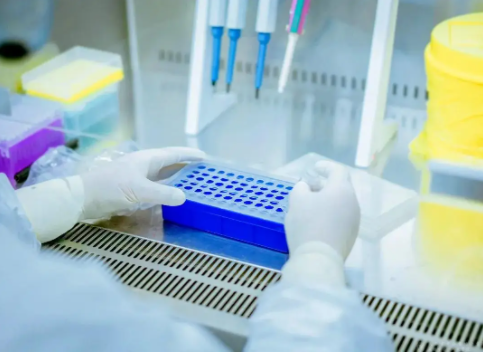It is time for clinical laboratories to push for cytomegalovirus (CMV) testing as part of the standard newborn screening process. We have seen some progress on this front recently, with Minnesota becoming the first state in the US to approve universal CMV screening at birth. However, Minnesota should not stand alone; newborns everywhere would benefit from CMV screening.
Here’s why: while CMV infections in healthy adults are often asymptomatic and harmless, the same infection in a developing fetus can be dangerous. Congenital CMV, caused by vertical transmission from mother to baby in utero, is associated with severe outcomes, including pregnancy loss, hearing loss, and neurodevelopmental issues such as microcephaly and seizures in affected babies.
Fortunately, these outcomes can be mitigated with early detection and intervention. The antiviral treatments ganciclovir or valganciclovir can be quite effective in easing symptoms. Treatment may also improve hearing and developmental outcomes, but they work best when given in the first few months after birth.
Early action through antiviral therapy is based on distinguishing between congenital CMV infections and the less problematic CMV infections that can happen in the weeks or months after birth. When there are symptoms of congenital CMV infection, they can easily go unnoticed or be mistaken for other things. But in most cases—some 90% of babies born with this infection—there are no symptoms at all. Without a standard policy of universal screening, cases of congenital CMV can evade detection until it is far too late to intervene for a healthier prognosis. CMV must be detected using specimens obtained from the baby within the first 21 days of life to diagnose a congenital infection.
Congenital CMV cases also merit universal screening according to the numbers. In the US, it’s estimated that about 20,000 babies are born with CMV each year, or one in every 200 births. Only 1% of these babies are diagnosed based on their symptoms, leaving a substantial number of at-risk babies undetected through traditional avenues.
However, widespread screening is not the norm these days. The majority of CMV screening is prompted by certain symptoms; for instance, certain states advise CMV testing for infants who do not pass their newborn hearing screening. Given that newborn hearing screenings have a high rate of false positives and false negatives, this approach is not optimal for reliable CMV detection. While CMV-related hearing loss is frequently present from birth, it may also remain undetected at birth or emerge as a late-onset hearing loss. A final concern with this approach is that premature babies and newborns in the Neonatal Intensive Care Unit (NICU) may frequently experience a delay in their hearing tests. The absence of better CMV screening options for this population presents a challenge to distinguish between congenital and postnatal infections, placing these vulnerable babies at even greater risk of missing critical clinical health information.
It is encouraging that some stakeholders are pushing for universal CMV screening in newborns. Before Minnesota, the National CMV Foundation called for the implementation of CMV into the Recommended Uniform Screening Panel (RUSP). This panel is overseen by the Department of Health and Human Services and includes a list of core diseases and secondary conditions recommended for newborn screening in all states.








